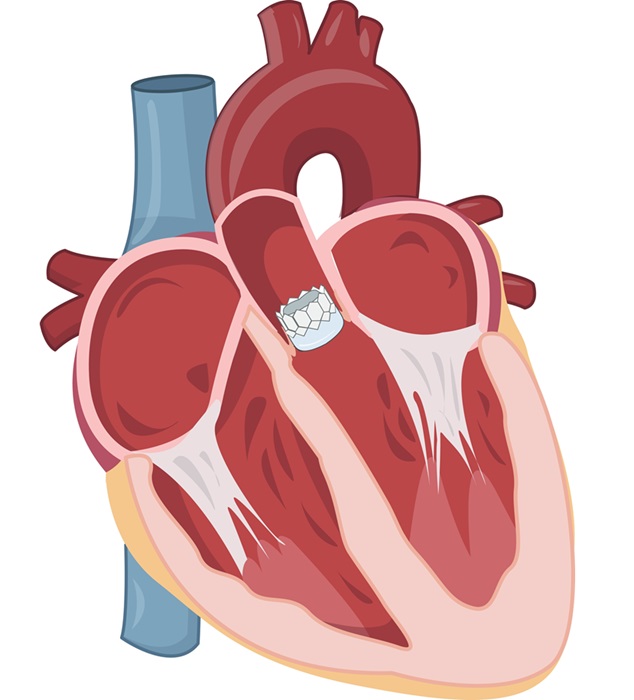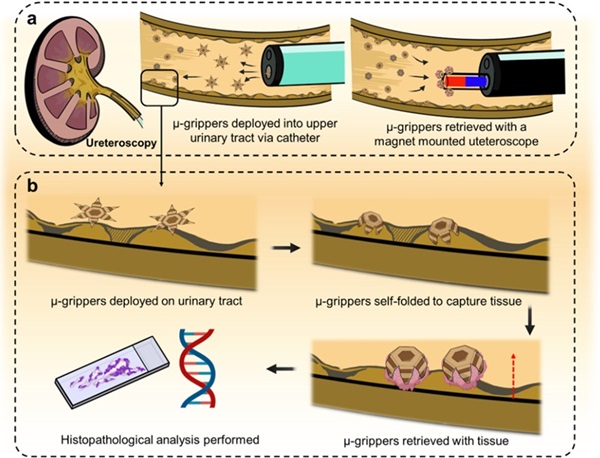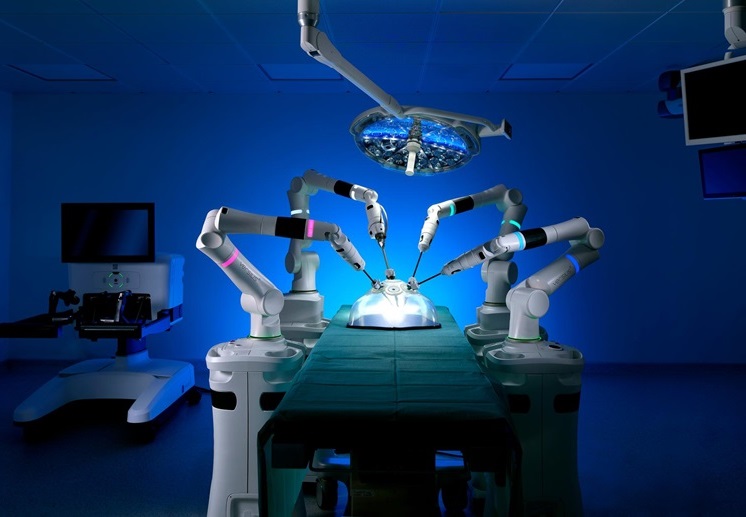Zoll Acquires Intellectual Assets of Coaxia
|
By HospiMedica International staff writers Posted on 15 Jul 2013 |
ZOLL (Chelmsford, MA, USA) has purchased the assets of CoAxia (Maple Grove, MN, USA), an early revenue stage medical device company that provides catheter-based perfusion augmentation therapies.
The core application ofCoAxia’s catheter technology, distributed under the trade names NeuroFlo and FloControl, involves the redistribution of blood flow from the lower extremities to support brain function during cerebral ischemia resulting from vasospasm, following subarachnoid hemorrhage. CoAxia did not have the funds to continue development after its de novo petition for the NeuroFlo catheter was rejected by the US Food and Drug Administration (FDA) for acute ischemic stroke. Zoll, however, still sees opportunity for the device and plans to design a new pivotal trial to take before the FDA.
Both NeuroFlo and FloControl blood flow redistribution technology use dual balloons to create temporary partial obstruction in the descending aorta. This technique causes a redistribution of cardiac output from the lower extremities to the cerebral vasculature without significantly increasing arterial blood pressure. The acquisition of the intellectual property also includes several key patents on cerebral perfusion augmentation as well as numerous other patents relevant to other various vascular procedures. Financial terms of the purchase were not disclosed.
“NeuroFlo technology has the potential to address a large portion of the population who suffer cerebral ischemia, offering a significant benefit to patients and the healthcare system,” said James Palazzolo, president of Zoll. “Our task is to continue to develop the significant body of clinical evidence started by CoAxia demonstrating the safety and efficacy of the NeuroFlo catheter and, in the end, do what is necessary for it to be a standard treatment option for hundreds of thousands of stroke patients worldwide.”
The acquisition of CoAxia’s intellectual property also offers synergy with Zoll’s acute critical care portfolio of products such as temperature management, which may reduce reperfusion injury following ischemia by using balloon catheters. The devices could also offer significant potential applications in blood flow redistribution for trauma, cardiac arrest, coronary procedures, surgical blood loss, and renal perfusion.
Related Links:
ZOLL
CoAxia
The core application ofCoAxia’s catheter technology, distributed under the trade names NeuroFlo and FloControl, involves the redistribution of blood flow from the lower extremities to support brain function during cerebral ischemia resulting from vasospasm, following subarachnoid hemorrhage. CoAxia did not have the funds to continue development after its de novo petition for the NeuroFlo catheter was rejected by the US Food and Drug Administration (FDA) for acute ischemic stroke. Zoll, however, still sees opportunity for the device and plans to design a new pivotal trial to take before the FDA.
Both NeuroFlo and FloControl blood flow redistribution technology use dual balloons to create temporary partial obstruction in the descending aorta. This technique causes a redistribution of cardiac output from the lower extremities to the cerebral vasculature without significantly increasing arterial blood pressure. The acquisition of the intellectual property also includes several key patents on cerebral perfusion augmentation as well as numerous other patents relevant to other various vascular procedures. Financial terms of the purchase were not disclosed.
“NeuroFlo technology has the potential to address a large portion of the population who suffer cerebral ischemia, offering a significant benefit to patients and the healthcare system,” said James Palazzolo, president of Zoll. “Our task is to continue to develop the significant body of clinical evidence started by CoAxia demonstrating the safety and efficacy of the NeuroFlo catheter and, in the end, do what is necessary for it to be a standard treatment option for hundreds of thousands of stroke patients worldwide.”
The acquisition of CoAxia’s intellectual property also offers synergy with Zoll’s acute critical care portfolio of products such as temperature management, which may reduce reperfusion injury following ischemia by using balloon catheters. The devices could also offer significant potential applications in blood flow redistribution for trauma, cardiac arrest, coronary procedures, surgical blood loss, and renal perfusion.
Related Links:
ZOLL
CoAxia
Latest Business News
- Hologic Acquires Gynesonics to Strengthen Existing Gynecological Surgical Business
- Smith+Nephew and JointVue Partner on Ultrasound Preoperative Planning in Robotics-Assisted Surgery
- Stryker Completes Acquisition of NICO Corporation
- BD Completes Acquisition of Critical Care from Edwards Lifesciences
- ZOLL to Acquire Vyaire Medical’s Ventilator Business
- Getinge Acquires Organ Transport Products and Services Company Paragonix Technologies
- Stryker Acquires care.ai to Boost AI-Driven Healthcare
- Johnson & Johnson Acquires Cardiovascular Specialist V-Wave
- Abbott and Medtronic Global Partnership to Integrate Advanced Glucose Sensing Technology with Automated Insulin Delivery Systems
- Edwards Lifesciences Acquires Sheba Medical’s Innovalve Bio Medical
- International Hospital Federation Awards 2024 Finalists Announced
- 2024 World Medical Tourism Conference and Medical Tourism Expo to Showcase Latest Innovations
- BD Acquires Edwards Lifesciences' Critical Care Product Group for USD 4.2 Billion
- MEDICA INNOVATION FORUM for the Healthcare Innovations of the Future
- Johnson & Johnson Acquires Cardiovascular Medical Device Company Shockwave Medical
- Mindray to Acquire Chinese Medical Device Company APT Medical
Channels
Critical Care
view channel_1.jpg)
Cutting-Edge Bioelectronic Device Offers Drug-Free Approach to Managing Bacterial Infections
Antibiotic-resistant infections pose an increasing threat to patient safety and healthcare systems worldwide. Recent estimates indicate that drug-resistant infections may rise by 70% by 2050, highlighting... Read more
Sophisticated Machine-Learning Approach Uses Patient EHRs to Predict Pneumonia Outcomes
Pneumonia, an infection that results in difficulty breathing due to fluid accumulation in the lungs, is one of the leading causes of death worldwide. This condition is particularly challenging to treat... Read more
Early TAVR Benefits Patients with Asymptomatic Severe Aortic Stenosis
For patients with asymptomatic severe aortic stenosis (AS) and preserved left-ventricular ejection fraction, current guidelines recommend clinical surveillance every six to twelve months.... Read more
First-Of-Its-Kind Experimental Therapy Enhances Tissue Repair After Heart Attack
Cardiovascular disease remains the leading cause of death worldwide, accounting for one-third of all annual fatalities. Following a heart attack, the heart's natural regenerative ability is limited, resulting... Read moreSurgical Techniques
view channel
Microgrippers For Miniature Biopsies to Create New Cancer Diagnostic Screening Paradigm
The standard diagnosis of upper urinary tract cancers typically involves the removal of suspicious tissue using forceps, a procedure that is technically challenging and samples only a single region of the organ.... Read moreMiniature Soft Lithium-Ion Battery Could Be Used as Defibrillator During Surgery
The development of tiny smart devices, measuring just a few cubic millimeters, requires equally miniature power sources. For minimally invasive biomedical devices that interact with biological tissues,... Read more.jpg)
TAVI Procedure Supported by Radial Artery Access Reduces Bleeding Complications
The TAVI procedure, or Transcatheter Aortic Valve Implantation, is a minimally invasive technique in which a new aortic valve is inserted through a femoral artery to replace a narrowed old valve.... Read more
Portable Surgical Robot Seamlessly Integrates into Any OR for Performing Cholecystectomy Procedures
The United States represents a significant market with a strong demand for a flexible surgical robotic system applicable across various care settings. However, there has been a lack of sufficient options... Read morePatient Care
view channel
Portable Biosensor Platform to Reduce Hospital-Acquired Infections
Approximately 4 million patients in the European Union acquire healthcare-associated infections (HAIs) or nosocomial infections each year, with around 37,000 deaths directly resulting from these infections,... Read moreFirst-Of-Its-Kind Portable Germicidal Light Technology Disinfects High-Touch Clinical Surfaces in Seconds
Reducing healthcare-acquired infections (HAIs) remains a pressing issue within global healthcare systems. In the United States alone, 1.7 million patients contract HAIs annually, leading to approximately... Read more
Surgical Capacity Optimization Solution Helps Hospitals Boost OR Utilization
An innovative solution has the capability to transform surgical capacity utilization by targeting the root cause of surgical block time inefficiencies. Fujitsu Limited’s (Tokyo, Japan) Surgical Capacity... Read more
Game-Changing Innovation in Surgical Instrument Sterilization Significantly Improves OR Throughput
A groundbreaking innovation enables hospitals to significantly improve instrument processing time and throughput in operating rooms (ORs) and sterile processing departments. Turbett Surgical, Inc.... Read moreHealth IT
view channel
Machine Learning Model Improves Mortality Risk Prediction for Cardiac Surgery Patients
Machine learning algorithms have been deployed to create predictive models in various medical fields, with some demonstrating improved outcomes compared to their standard-of-care counterparts.... Read more
Strategic Collaboration to Develop and Integrate Generative AI into Healthcare
Top industry experts have underscored the immediate requirement for healthcare systems and hospitals to respond to severe cost and margin pressures. Close to half of U.S. hospitals ended 2022 in the red... Read more
AI-Enabled Operating Rooms Solution Helps Hospitals Maximize Utilization and Unlock Capacity
For healthcare organizations, optimizing operating room (OR) utilization during prime time hours is a complex challenge. Surgeons and clinics face difficulties in finding available slots for booking cases,... Read more
AI Predicts Pancreatic Cancer Three Years before Diagnosis from Patients’ Medical Records
Screening for common cancers like breast, cervix, and prostate cancer relies on relatively simple and highly effective techniques, such as mammograms, Pap smears, and blood tests. These methods have revolutionized... Read morePoint of Care
view channel
Handheld, Sound-Based Diagnostic System Delivers Bedside Blood Test Results in An Hour
Patients who go to a doctor for a blood test often have to contend with a needle and syringe, followed by a long wait—sometimes hours or even days—for lab results. Scientists have been working hard to... Read more













